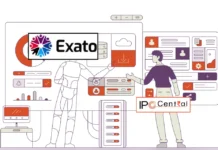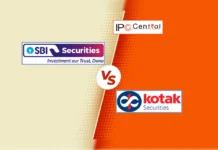Rail Vikas Nigam Limited (RVNL) will launch its maiden IPO on 29 March and the same will remain open till 3 April 2019. The company, a Miniratna under the Ministry of Railways (MoR), plans to sell the shares in the price range of INR17 – 19 per share and retail investors and employees will be eligible for a discount of INR0.50 per share. Bids can be placed for minimum 780 shares and in multiples thereafter. In total, 253,457,280 shares will be sold through Offer For Sale (OFS) route amounting to as much as INR481.57 crore. Through this Rail Vikas IPO review, we try to ascertain of the offer is a worthwhile investment for investors.
Rail Vikas IPO details | |
| Subscription Dates | 29 March – 3 April 2019 |
| Price Band | INR17 – 19 per share (Retail and employee discount – INR0.50 per share) |
| Fresh issue | Nil |
| Offer For Sale | 253,457,280 shares (INR430.88 – 481.57 crore) |
| Total IPO size | 253,457,280 shares (INR430.88 – 481.57 crore) |
| Minimum bid (lot size) | 780 shares |
| Face Value | INR10 per share |
| Retail Allocation | 35% |
| Listing On | NSE, BSE |
Rail Vikas IPO Review: All OFS, no fresh shares
As mentioned above, all the shares sold in the IPO will be offered by the government and as such, the company will not get any funds from IPO proceeds. RVNL is a Public Sector Undertaking (PSU), currently fully owned by the government. Following the IPO, the central government’s stake in the company will drop to 87.84%.
It is noteworthy that the government earlier planned to sell 10% stake in RVNL but has now increased it to 12.16%. It earlier planned to raise INR600 crore but seems to have scaled down expectations even after increasing the number of shares to be sold. This is good news for investors.
Read Also: Metropolis Healthcare OFS IPO opens on 3 April, 5 things you need to know
Rail Vikas IPO Review: Execution for Indian Railways
RVNL is a miniratna (Category – I) PSU and its key business operation is to execute various projects for the Indian Railways. These include laying new lines, doubling the existing routes, gauge conversion, railway electrification, metro projects, workshops, major bridges, construction of cable stayed bridges, institution buildings etc.
Read Also: Metropolis Healthcare IPO coming soon
Since its inception in 2003, RVNL has worked on 174 projects from the Ministry of Railways and has completed 72 projects worth INR20,567.3 crore while the remaining are ‘Work in Progress’. As on December 2018, the company had an order book of INR77,504.3 crore including the 102 ongoing projects. This order book comprises of medium and long term projects and offers excellent revenue visibility.
Rail Vikas IPO Review: Growing profits, reducing margins
The company has managed to post impressive financial performance as far as top-line and bottom-line are concerned with both parameters posting consistent increase in the last four years. This is a direct function of improved investments in railways which are further likely to increase in the coming years.
Read Also: Polycab IPO Analysis: Should you subscribe?
Declining margins is a concern but the single digit figures also mean that there is more upside than downside from here.
Rail Vikas Nigam’s financial performance (in INR crore) | ||||||
| FY2015 | FY2016 | FY2017 | FY2018 | H1 FY2019 | ||
| Total revenues | 3,269.8 | 4,720.3 | 6,162.9 | 7,822.3 | 3,770.4 | |
| Total expenses | 3,021.3 | 4,350.3 | 5,673.8 | 7,258.1 | 3,484.6 | |
| Comprehensive income | 336.8 | 429.0 | 443.1 | 569.4 | 253.6 | |
| Net margin (%) | 10.3 | 9.1 | 7.2 | 7.3 | 6.7 | |
Rail Vikas IPO Review: Should you invest in RVNL IPO?
First, let’s discuss the positives. RVNL’s debt equity ratio is less than 1 which is a great indicator of a lean balance sheet. Another factor to consider is that this ratio has come down to 0.49 in H1 FY2019 from 0.81 in FY2015 since the company has been paying down long term debt. This is noteworthy considering the delays in project financing from sponsoring authorities. As of February 2019, the company had a shortfall in reimbursement on this account of INR1,417 crore.
Being a PSU, RVNL is supposed to pay regular dividends and it doesn’t disappoint on this front. Taking the dividend of INR0.8 per share paid in FY2018 as a benchmark, the company’s dividend yield stands at 4.32% after adjusting for retail discount. This is quite attractive for dividend investors, provided valuations offer comfort.
Read Also: Upcoming IPOs in 2019 – Forthcoming IPO Calendar in 2019
As with all PSUs, RVNL has its own set of quirks. RVNL’s dependence on MoR for business is quite evident from the fact that the ministry accounted for 96.11% of its order book as of December 2018. Delay in project expense reimbursements, as mentioned above, is another one. However, there are other issues as well.
An important piece of information we got in the prospectus is that out of the total 550 employees on its payrolls, 389 are on deputation from Indian Railways. This is an abnormally high figure and naturally gives an impression that the company’s independent existence is only on papers.
This dual dependency for revenues as well as manpower calls for a discount in valuations to its peers. The company lists IRCON International as its competitor which trades at a PE ratio of 9.5. RVNL’s Earnings Per Share (EPS) of INR2.73 means that it is asking for a Price/Earnings (PE ratio) of 6.23 – 6.96. As we mentioned above, RVNL deserves a discount to its competitors, we find the asking PE ratio is just fine. Its Return on Net Worth (RONW) of 14.52% is also strong enough and the Net Asset Value (NAV) of INR18.83 per share means that the asking price is a discount on P/BV metric.
Lately, PSU IPOs have disappointed due to high valuations and poor sentiments in the secondary markets. The government and merchant bankers seem to have taken a cue and have priced the IPO reasonably, reveals Rail Vikas Nigam IPO review. Please visit our discussion page for RVNL IPO for more details about grey market rates and other discussion.
Disclaimer – The objective behind RVNL IPO Analysis is to offer an unbiased view of the company’s operations, offer details, strengths, weaknesses, financial performance and valuation. The IPO rating framework helps investors in taking a call if RVNL IPO is worth investing or not. Nevertheless, this is not an IPO recommendation to subscribe or avoid and the decision to invest should be based on individual investor’s risk profile.






































